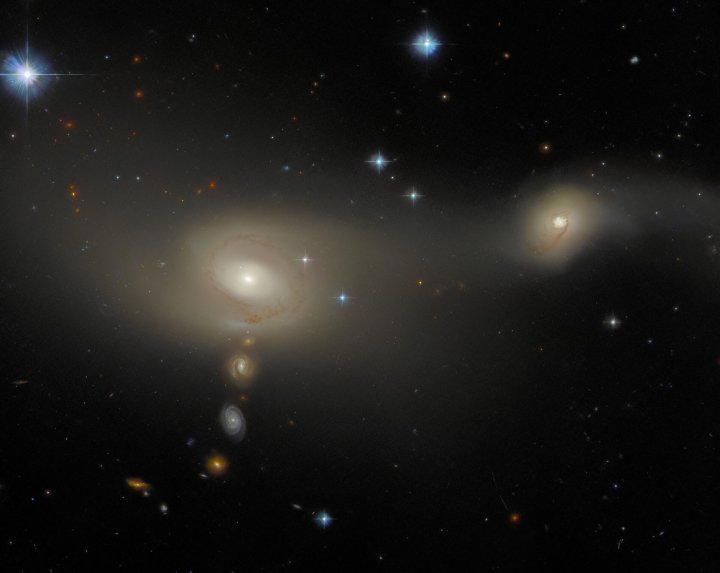Sometimes, Hubble or other telescopes will capture two or more galaxies that are in the process of merging — called interacting galaxies. These huge collisions can warp one or both of the galaxies, twisting them into strange shapes. The results of such collisions can be catastrophic, with one of the galaxies being destroyed. Or they can be creative, with one larger galaxy being formed from the two merging galaxies.
However, sometimes galaxies that appear very close in images are not actually interacting. Sometimes, they merely appear to be close when seen from Earth, but they can actually be thousands of light-years apart. That’s the case with a previous Hubble image showing two overlapping galaxies.
The latest Hubble image shows an interesting mix, which is a twist on this premise: it features both an interacting galaxy system and a string of galaxies that happen to line up in a neat procession.

The interacting galaxies are called Arp-Madore 2105-332 and are located 200 million light-years away. Even though the two look fairly far apart in this image, with one in the middle and one to the right of the frame, they are close enough in galactic terms to be affecting each other gravitationally. Beneath the leftmost part of the galaxy pair is a string of other galaxies lined up purely by coincidence.
The interacting galaxies are named Arp-Madore because of the catalog they are named in, which collects together unusual galaxies known as peculiar galaxies. Among these peculiar galaxies are those that have been pulled into unusual shapes due to mergers or are in the process of interacting. Peculiar galaxies can have one spiral arm brighter than the others, or two supermassive black holes at their center, or be affected by a nearby satellite galaxy, or even be a stunning ring shape.
Editors’ Recommendations

